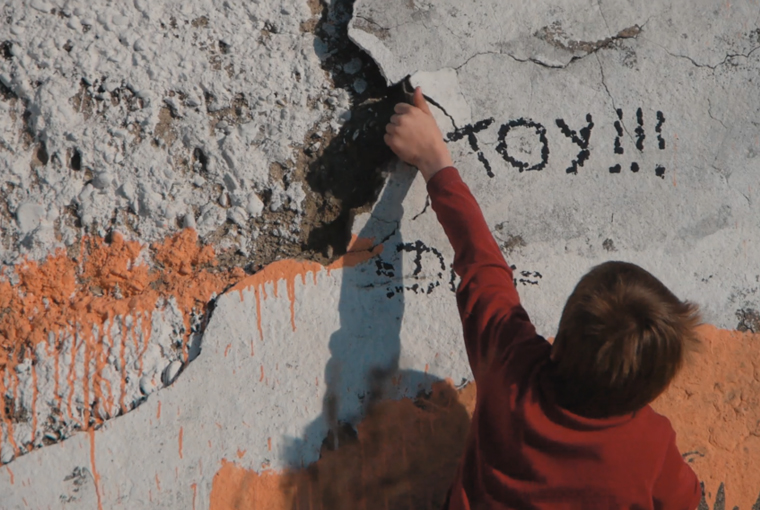
When The Rite of Spring premiered in Paris in 1913, it sparked a near-riot in the audience. The ballet’s avant-garde music, with its jarring rhythms, dissonant harmonies, and unconventional structure, paired with the equally experimental choreography by Vaslav Nijinsky, broke away from the norms of classical ballet. Audiences were so shocked by this radical departure from traditional aesthetics that chaos erupted, with people booing, shouting, and even brawling inside the theater. The premiere was produced by the renowned impresario Sergei Diaghilev, who was the founder of the Ballets Russes, a Paris-based ballet company known for pushing artistic boundaries. Diaghilev had a reputation for showing avant-garde works and embraced the controversy, famously stating, “Exactly what I wanted!” Instead of apologizing, Diaghilev and his company leaned into the shock value and the conversations it sparked.
Today’s cultural actors are increasingly facing public pressure for the content they are or are not inflicting on their audiences. In recent years, several film festivals have faced backlash and issued public apologies in response to controversies over their programming. In 2023, the Stockholm International Film Festival disinvited Israeli-American filmmaker Aleeza Chanowitz due to concerns over political tensions related to Israel. The International Documentary Film Festival Amsterdam (IDFA) issued an apology the same year after a protest involving a pro-Palestinian slogan caused Israeli filmmakers to withdraw their work. Similarly, several film festivals faced public pressures due to the war in Ukraine. For example, in 2022, the Glasgow Film Festival pulled two Russian films in response to Russia’s invasion of Ukraine. The Luxembourg City Film Festival removed four Russian films to show solidarity with Ukraine amid the war, following consultations with local cultural authorities.
Cultural institutions shoulder the blame where political institutions have abdicated – they are being held accountable for the social and political climate. Certainly, cultural elites can become scapegoats for broader societal issues that extend beyond their control. The arts, with their ties to identity, then become the stage on which deeper political frustrations play out, especially when political issues feel too abstract or difficult to tackle head-on. Being visible symbols of the establishment, a film or exhibition is an easy target for channeling frustrations. On the other hand, when festivals and museums are forced to defend their programming, it raises the question of whether this pressure reflects a disconnect between the cultural sector and the public or a climate of fear-driven self-preservation.
In the late 1990s and early 2000s, opinion disclaimers – “the views expressed in [document] do not necessarily represent the views of [institution issuing the document]” became ubiquitous. The rise of mass media, the internet, and the democratization of public discourse led to greater scrutiny of organizations, pushing them to pre-emptively protect themselves by clearly stating their non-endorsement of the content they produce or distribute. Although such disclaimers cannot yet be found in festival booklets, the logic behind them appears in the form of self-censorship, as well as in pre-emptive and retroactive program adjustments. In one particularly absurd incident at this year’s high-pressure Berlinale, the festival directors had to respond after the event’s Instagram account was hacked and a post criticizing the festival for its silence over the war in Gaza was uploaded. The festival quickly condemned the hack, apologizing for the unauthorized post, and reaffirmed that the views expressed in the post did not represent the festival’s official stance.
The willingness – or perhaps compulsion – to apologize or retract content may suggest that risk-taking in art is increasingly constrained by the threat of backlash. Art has historically thrived on provocation and on pushing boundaries. Yet, today, the concept of risk seems less about creative exploration and more about managing potential fallout; damage control supersedes meaningful confrontation. This may lead to more conservative programming and stifle experimentation in art.
Stravinsky’s The Rite of Spring serves as a reminder of what artistic risk once meant. Diaghilev’s refusal to apologize for the chaos it provoked reflected a bold commitment to pushing the boundaries of art, regardless of public reaction. Today, the pressures to conform to societal expectations or pre-empt controversy push cultural managers to avoid the very risks that once fueled artistic innovation. True cultural leadership involves embracing disruption, not sidestepping it. If the arts become too focused on placating audiences or mitigating fallout, they risk losing the power to challenge and transform.
***
This month, we finalize Martin Kudláč’s coverage of the 2023 Ji.hlava International Documentary Film Festival with reviews of Elvis Lenić’s Ship, a swansong to the declining Uljanik shipyard in Pula, Ivan Ostrochovský and Pavol Pekarčík’s docu-fiction Photophobia set against the Russo-Ukrainian war, and Jarmila Štuková’s Is There Any Place for Me, Please?, a deeply personal story of resilience and recovery. Sonya Vseliubska discusses Klára Tasovská’s I’m Not Everything I Want to Be, a documentary chronicling the eventful life and career of Czech photographer Libuše Jarcovjáková. You will find a conversation with Jarcovjáková and Tasovská on the birth and development of the project in our Interviews section. Finally, Konstanty Kuzma reviewed Bálint Révész and Dávid Mikulán’s Kix, a promising documentary about two young rascals that ends up thwarting its own aesthetic premise.
We hope you enjoy our reads.
Konstanty Kuzma & Moritz Pfeifer
Editors




Leave a Comment